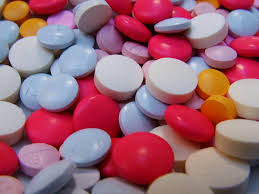Symptom Finder - Hypoglycemia
HYPOGLYCEMIA
A list of possibilities for hypoglycemia may be had simply by thinking of the endocrine glands. Consequently, thinking of the pancreas, one could recall insulinoma. Thinking of the adrenal gland, one would recall Addison disease. Considering the pituitary, one would remember hypopituitarism, and the thyroid hypothyroidism. Unfortunately, a few conditions may be overlooked by this method alone. If none of the above diagnoses seem to fit, the patient may have glycogen storage disease, cirrhosis, or functional hypoglycemia. Diabetics with hypoglycemia may be taking too much insulin, or their doses of oral hypoglycemic agents may be too high.
Approach to the Diagnosis
The clinical picture may fit one of the endocrine disorders mentioned above. If not, the laboratory can be of tremendous assistance. A glucose tolerance test will help diagnose functional hypoglycemia. Hospitalization for a 72-hour fast while taking frequent blood sugar tests will help to diagnose an insulinoma.
Other Useful Tests
1. CBC
2. Urinalysis
3. Chemistry panel (advanced liver disease)
4. Liver profile (cirrhosis)
5. Thyroid profile (hypothyroidism, hypopituitarism)
6. Plasma cortisol level (Addison disease)
7. Serum growth hormone assay (hypopituitarism)
8. C-peptide level (insulinoma)
9. Plasma insulin assay (insulinoma)
10. Tolbutamide tolerance test (insulinoma)
11. Endocrine consult
12. CT scan of the abdomen (insulinoma, glycogen storage disease)
13. Genetic testing (glycogen storage disease)
14. Liver biopsy for glucose-6-phosphate activity (glycogen storage
disease)
A list of possibilities for hypoglycemia may be had simply by thinking of the endocrine glands. Consequently, thinking of the pancreas, one could recall insulinoma. Thinking of the adrenal gland, one would recall Addison disease. Considering the pituitary, one would remember hypopituitarism, and the thyroid hypothyroidism. Unfortunately, a few conditions may be overlooked by this method alone. If none of the above diagnoses seem to fit, the patient may have glycogen storage disease, cirrhosis, or functional hypoglycemia. Diabetics with hypoglycemia may be taking too much insulin, or their doses of oral hypoglycemic agents may be too high.
Approach to the Diagnosis
The clinical picture may fit one of the endocrine disorders mentioned above. If not, the laboratory can be of tremendous assistance. A glucose tolerance test will help diagnose functional hypoglycemia. Hospitalization for a 72-hour fast while taking frequent blood sugar tests will help to diagnose an insulinoma.
Other Useful Tests
1. CBC
2. Urinalysis
3. Chemistry panel (advanced liver disease)
4. Liver profile (cirrhosis)
5. Thyroid profile (hypothyroidism, hypopituitarism)
6. Plasma cortisol level (Addison disease)
7. Serum growth hormone assay (hypopituitarism)
8. C-peptide level (insulinoma)
9. Plasma insulin assay (insulinoma)
10. Tolbutamide tolerance test (insulinoma)
11. Endocrine consult
12. CT scan of the abdomen (insulinoma, glycogen storage disease)
13. Genetic testing (glycogen storage disease)
14. Liver biopsy for glucose-6-phosphate activity (glycogen storage
disease)

